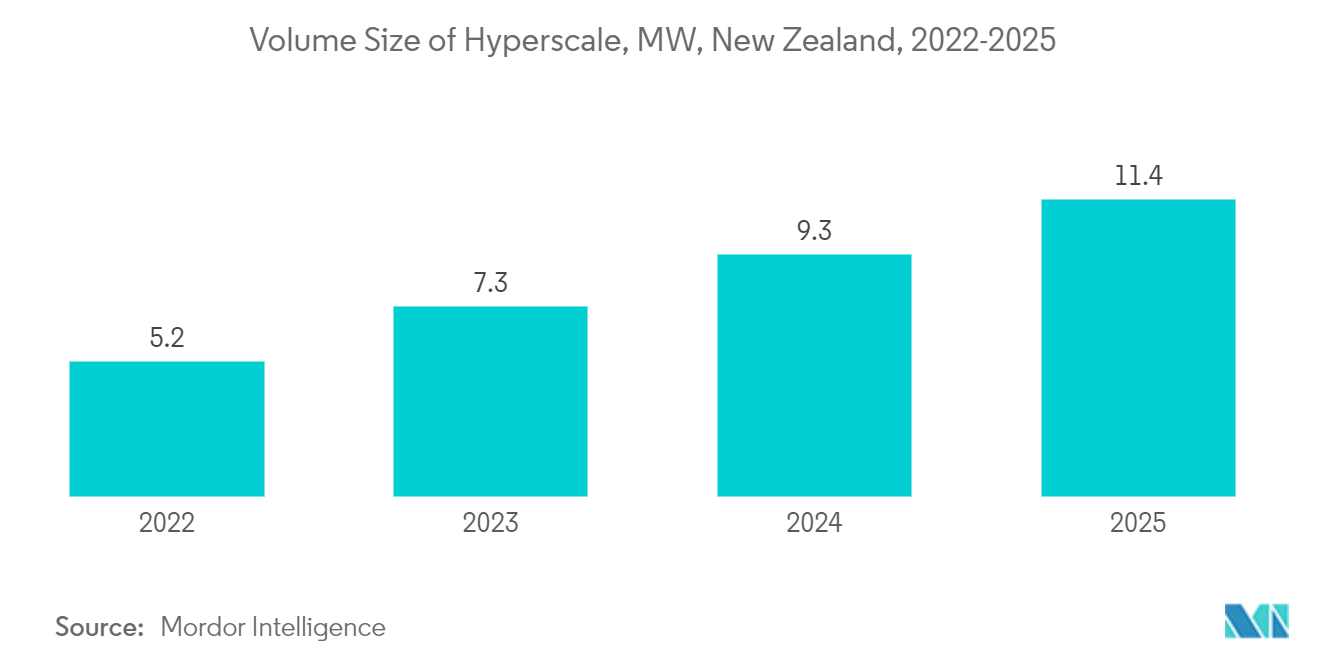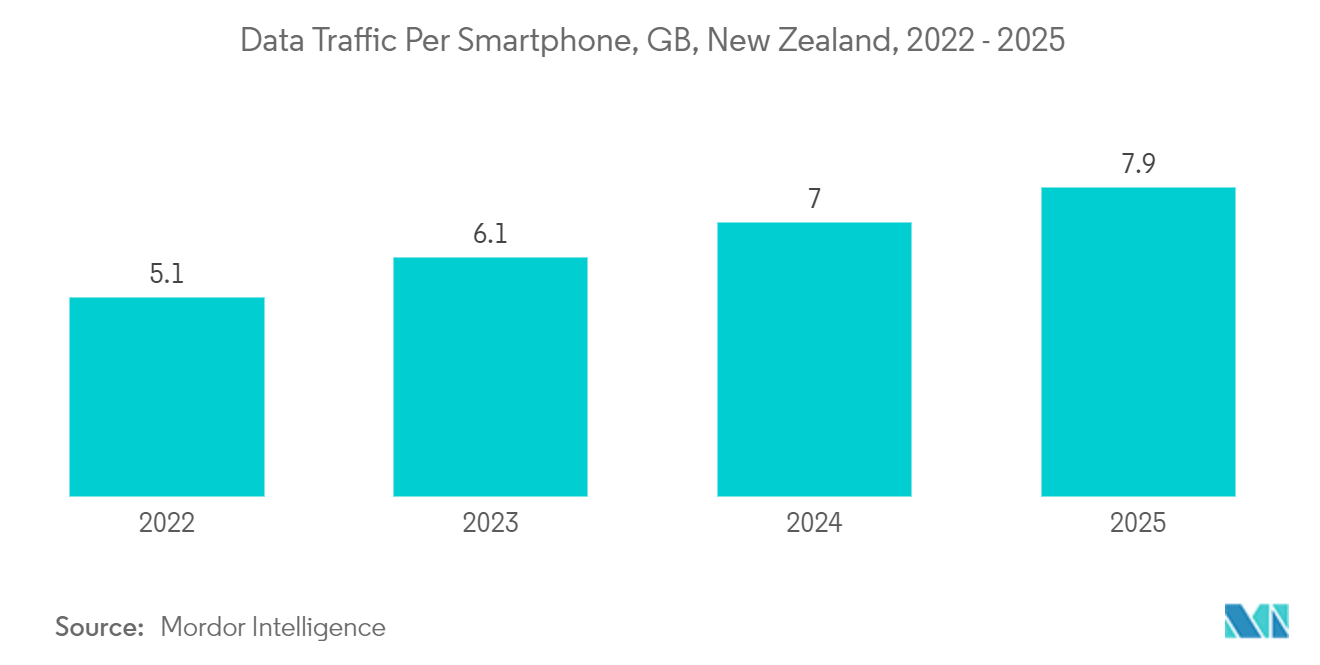Market Trends of New Zealand Data Center Construction Industry
Hyperscale Data Center Segment is expected to be the Fastest Growing
- New Zealand provides a strong market infrastructure and robust regulatory requirements. Hence, new hyperscale entrants should be amenable to taking up colocation space or build-to-suit projects with a local or regional provider; for instance, Canberra Data Centers recently announced hyperscale-focused projects around Auckland.
- The development of hyperscale data centers is increasing in New Zealand. For instance, in August 2022, CDC Data Centre (CDC) opened two data centers in Auckland, which are considered to be the country's largest and most secure, as well as New Zealand's first hyperscale data center facilities. It is estimated that New Zealand could face an inflow of hyperscale from Australian operators due to its suitable climate to handle hyperscale facilities.
- Vodafone, in collaboration with Ciena, is spearheading the surge of data centers in New Zealand. Their partnership focuses on providing a robust network infrastructure, including the necessary "pipes," to facilitate the seamless flow of vast data volumes both domestically and internationally, while also linking the emerging data centers. Apart from CDC's two projects, there are an additional eight in the pipeline. Notably, DCI Data Centres is constructing two facilities on the North Shore, with a combined investment of approximately $600 million, one of which is poised to become New Zealand's largest data center.
- The capacity of these data centers is often gauged by their peak power consumption. For instance, one of DCI's centers is projected to be a 40MW facility. Microsoft is concurrently developing three data centers, and a Takanini data center is undergoing upgrades to reach a 10MW capacity. Furthermore, Amazon is funneling $7.5 billion into a cluster, comprising at least three data centers, set to establish an Amazon Web Services (AWS) zone, with an anticipated launch in 2024. Such collective growth in New Zealand would acclerate the growth of hyperscale DC facilities in future.

Telecom is Expected to Hold the Highest Market Share
- Introducing the 5G network in New Zealand in March 2021 will likely increase data center investments. Vodafone and Spark have already launched a 5G network. According to Opensignal, Vodafone customers with a 5 G-enabled device and subscription had an active 5G connection of 3.9% of the time compared to Spark, which had an active connection of 2.9% of the time.
- Telecommunications methods have changed over the years, and New Zealanders need reliable telecommunications services for many aspects of their daily lives. The proportion of active internet users has increased overall in line with global trends, supporting the country's ongoing digital transition. The Ultra-Fast Broadband Initiative is a New Zealand government program to build a fiber optic network covering 87% of the population by the end of 2023. It is a public-private partnership between the government and four companies, with a total government investment of NZD 1.7 billion.
- The broadband market is experiencing slow growth, driven primarily by new building construction in greenfield developments or urban renewals. The UFB government project reached over 1.7 million facilities and connected 63%, or 1.1 million. Fixed broadband subscribers are expected to increase due to an increase in households and a decrease in the number of underserved facilities that were previously unconnected.
- Moreover, NZD 15 million (USD 9 million) in funding is earmarked for the launch of the Distant Users Scheme. This initiative aims to provide broadband services to the nation's most remote regions, many of which currently lack any coverage or have limited services limited to voice and text. Additionally, the grant allocates an extra NZD 2 million (USD 1 million) to potentially extend the Marae Digital Connectivity program by up to two years. The scheme's final details are currently being fine-tuned ahead of its launch. This drives the adoption of data centers in the telecom industry in the country.


